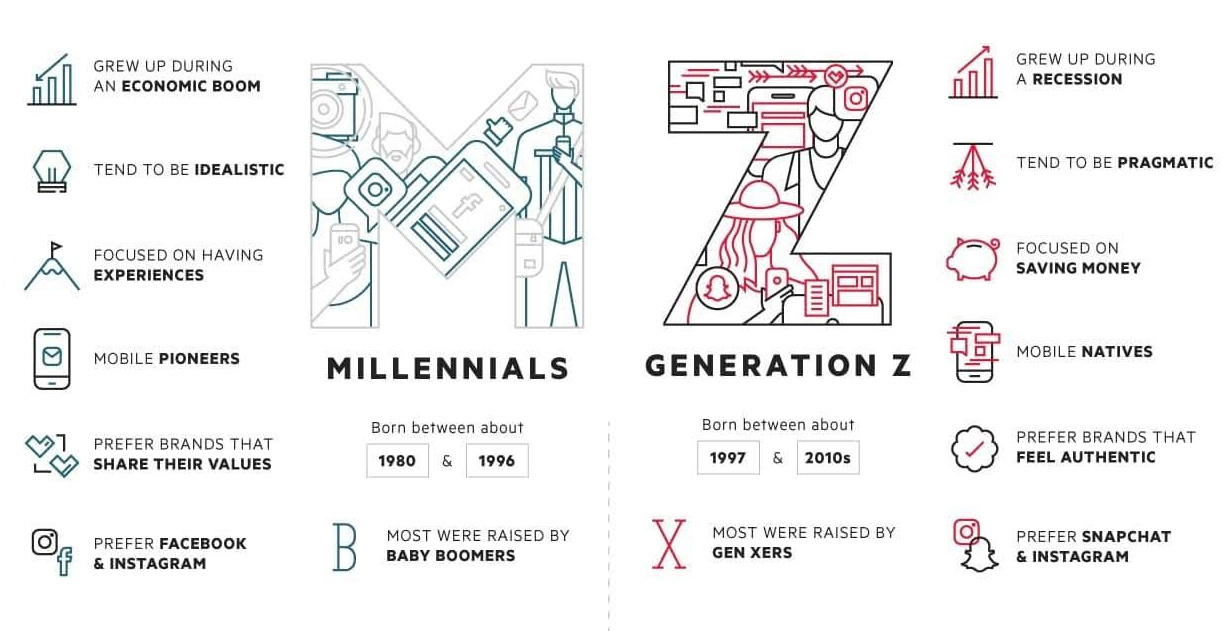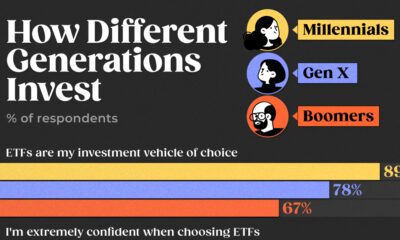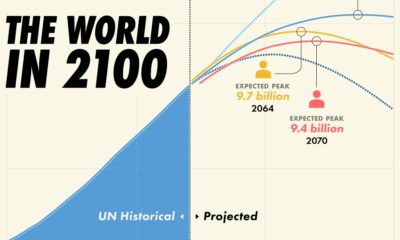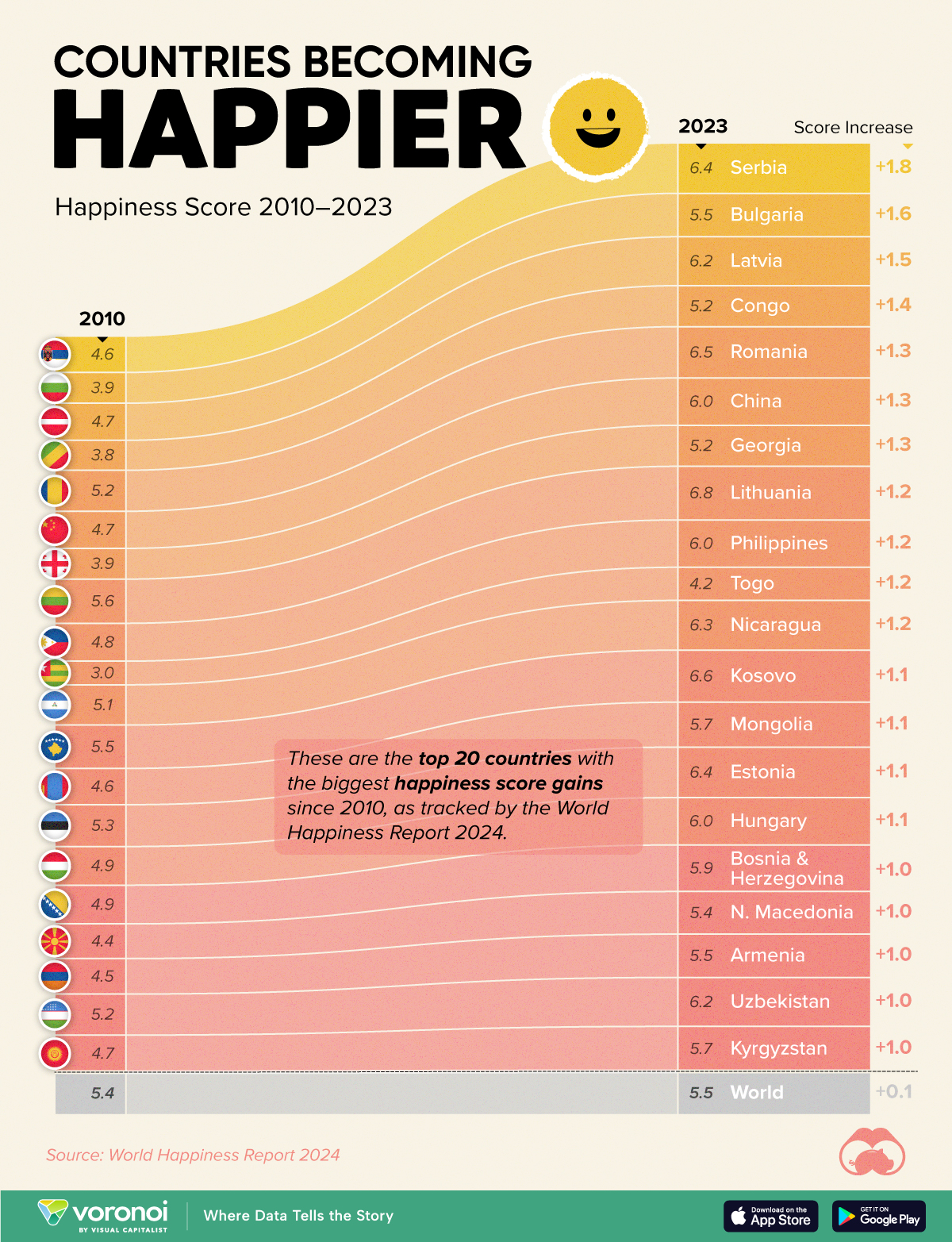Demographics
Meet Generation Z: The Newest Member to the Workforce
Every generation approaches the workplace differently.
While talk over the last decade has largely focused on understanding the work habits and attitudes of Millennials, it’s already time for a new generation to enter the fold.
Generation Z, the group born after the Millennials, is entering their early adult years and starting their young careers. What makes them different, and how will they approach things differently than past generations?
Meet Generation Z
Today’s infographic comes to us from ZeroCater, and it will help introduce you to the newest entrant to the modern workforce: Generation Z.

There is no exact consensus on the definition of Generation Z, and demographers can differ on where it starts. Some have Gen Z beginning as early as the mid-1990s, while others see it starting in the mid-2000s.
Regardless, Generation Z is the group that follows the Millennials – and many Gen Zers are wrapping up high school, finishing up their university degrees, or looking to get their first real jobs.
Millennials vs. Gen Z
While generational differences cast a wide net and don’t necessarily apply to every individual, here is what demographers say are some key similarities and differences between Gen Z and Millennials.
| Millennials | Generation Z |
|---|---|
| Raised by Baby Boomers | Raised by Gen Xers |
| Grew up during an economic boom | Grew up during a recession |
| Tend to be idealistic | Tend to be pragmatic |
| Focused on having experiences | Focused on saving money |
| Mobile pioneers | Mobile natives |
| Prefer brands that share their values | Prefer brands that feel authentic |
| Prefer Facebook and Instagram | Prefer Snapchat and Instagram |
Generation Z tends to be more pragmatic, approaching both their education and career differently than Millennials. It appears that Gen Z is also approaching money in a unique way compared to past groups.
What to Expect?
Generation Z does not remember a time when the internet did not exist – and as such, it’s not surprising to learn that 50% of Gen Z spends 10 hours a day connected online, and 70% watches YouTube for two hours a day or more.
But put aside this ultra-connectivity, and Gen Zers have some unique and possibly unexpected traits. Gen Z prefers face-to-face interactions in the workplace, and also expects to work harder than past groups. Gen Z is also the most diverse generation (49% non-white) and values racial equality as a top issue. Finally, Gen Z is possibly one of the most practical generations, valuing things like saving money and getting stable jobs.
You may already have Gen Zers in your workplace – but if you don’t, you will soon.
Demographics
Countries With the Largest Happiness Gains Since 2010
Tracking Gallup survey data for more than a decade reveals insights into the regions seeing happiness gains.
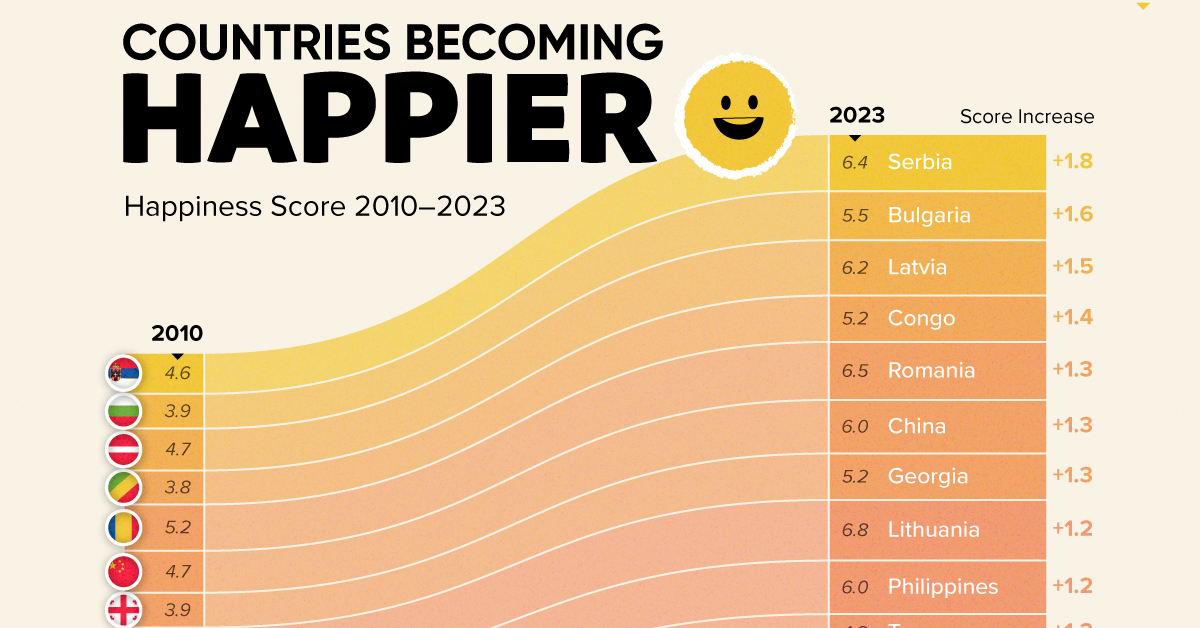
Countries With the Largest Happiness Gains Since 2010
This was originally posted on our Voronoi app. Download the app for free on iOS or Android and discover incredible data-driven charts from a variety of trusted sources.
In 2011, Bhutan sponsored a UN resolution that invited governments to prioritize happiness and well-being as a way to measure social and economic development.
And thus, the World Happiness Report was born.
In 2012, the first report released, examining Gallup poll data from 2006–2010 that asked respondents in nearly every country to evaluate their life on a 0–10 scale. From this they extrapolated a single “happiness score” out of 10 to compare how happy countries are.
More than a decade later, the 2024 World Happiness Report continues the mission to quantify, measure, and compare well-being. Its latest findings also include how countries have become happier in the intervening years.
We visualize these findings in the above chart, which shows the 20 countries that have seen their happiness scores grow the most since 2010.
Which Countries Have Become Happier Since 2010?
Serbia leads a list of 12 Eastern European nations whose average happiness score has improved more than 20% in the last decade.
In the same time period, the Serbian economy has doubled to $80 billion, and its per capita GDP has nearly doubled to $9,538 in current dollar terms.
| Rank | Country | Happiness Score Gains (2010–2024) | 2024 Happiness Score (out of 10) |
|---|---|---|---|
| 1 | 🇷🇸 Serbia | +1.8 | 6.4 |
| 2 | 🇧🇬 Bulgaria | +1.6 | 5.5 |
| 3 | 🇱🇻 Latvia | +1.5 | 6.2 |
| 4 | 🇨🇬 Congo | +1.4 | 5.2 |
| 5 | 🇷🇴 Romania | +1.3 | 6.5 |
| 6 | 🇨🇳 China | +1.3 | 6.0 |
| 7 | 🇬🇪 Georgia | +1.3 | 5.2 |
| 8 | 🇱🇹 Lithuania | +1.2 | 6.8 |
| 9 | 🇵🇭 Philippines | +1.2 | 6.0 |
| 10 | 🇹🇬 Togo | +1.2 | 4.2 |
| 11 | 🇳🇮 Nicaragua | +1.2 | 6.3 |
| 12 | 🇽🇰 Kosovo | +1.1 | 6.6 |
| 13 | 🇲🇳 Mongolia | +1.1 | 5.7 |
| 14 | 🇪🇪 Estonia | +1.1 | 6.4 |
| 15 | 🇭🇺 Hungary | +1.1 | 6.0 |
| 16 | 🇧🇦 Bosnia & Herzegovina | +1.0 | 5.9 |
| 17 | 🇲🇰 North Macedonia | +1.0 | 5.4 |
| 18 | 🇦🇲 Armenia | +1.0 | 5.5 |
| 19 | 🇺🇿 Uzbekistan | +1.0 | 6.2 |
| 20 | 🇰🇬 Kyrgyzstan | +1.0 | 5.7 |
| N/A | 🌍 World | +0.1 | 5.5 |
Since the first report, Western Europe has on average been happier than Eastern Europe. But as seen with these happiness gains, Eastern Europe is now seeing their happiness levels converge closer to their Western counterparts. In fact, when looking at those under the age of 30, the most recent happiness scores are nearly the same across the continent.
All in all, 20 countries have increased their happiness score by a full point or more since 2010, on the 0–10 scale.
-

 Travel1 week ago
Travel1 week agoAirline Incidents: How Do Boeing and Airbus Compare?
-

 Markets3 weeks ago
Markets3 weeks agoVisualizing America’s Shortage of Affordable Homes
-

 Green3 weeks ago
Green3 weeks agoRanked: Top Countries by Total Forest Loss Since 2001
-

 Money2 weeks ago
Money2 weeks agoWhere Does One U.S. Tax Dollar Go?
-

 Misc2 weeks ago
Misc2 weeks agoAlmost Every EV Stock is Down After Q1 2024
-

 AI2 weeks ago
AI2 weeks agoThe Stock Performance of U.S. Chipmakers So Far in 2024
-

 Markets2 weeks ago
Markets2 weeks agoCharted: Big Four Market Share by S&P 500 Audits
-

 Real Estate2 weeks ago
Real Estate2 weeks agoRanked: The Most Valuable Housing Markets in America

